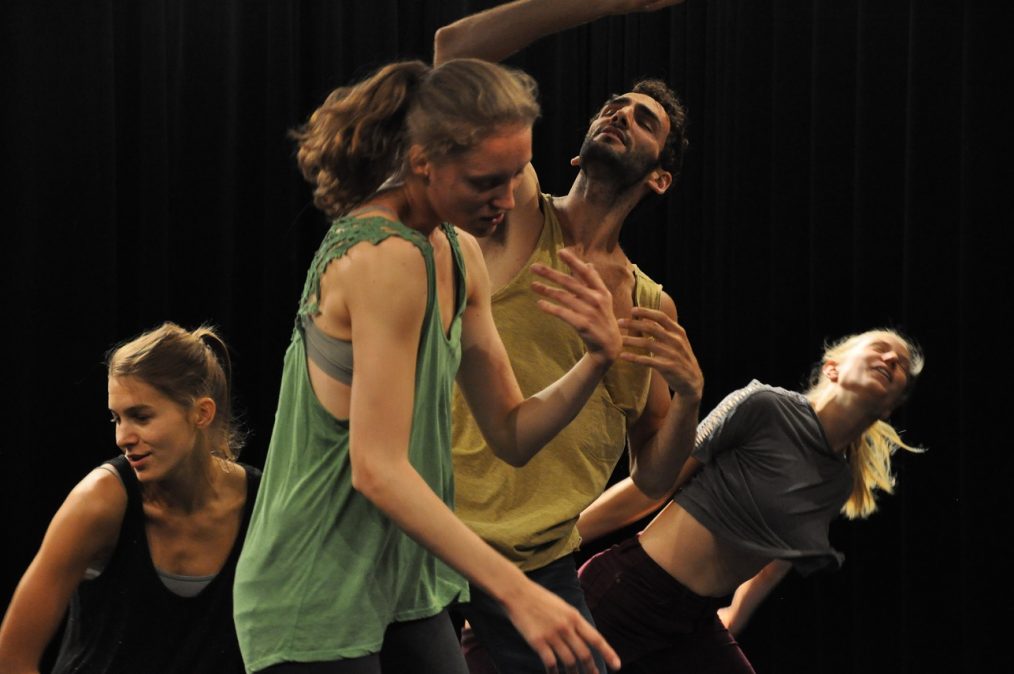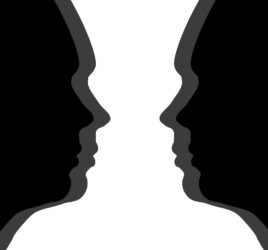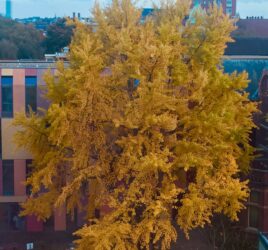
How Dance Can Help Us Understand Group Psychology
People dance for entertainment, as a profession, or as a sport. Moreover, dance seems to have an inherent social component. Dancing means engaging in coordinated actions together, and we know from previous literature that this can foster feelings of solidarity (e.g., Burgoon, Stern, & Dillman, 1995) – we move as one, therefore we feel as one.
Although the activity of dancing seems to have social benefits, I myself am more often exposed to dance as an observer, that is, as a member of the audience. I therefore wondered, can dancing have similar effects when you merely observe it?
Historically, dance was instrumental in diverse rituals to communicate and to express for example strength, harmony, or identity (e.g., Spencer, 1985). For both spectators and performers, dance had a social function. Today we still dance. Although sometimes less ritualistic, dance is still a common part of contemporary live, for example in performing arts.
“I find the sense of feeling completely ‘into’ a performance, while not physically participating, fascinating.”
Even though in performing arts, audiences are often not partaking in the action, it seems they are able to feel involved. Think of concerts where you ecstatically dance or sing along, or performances that receive a standing ovation because ‘something’ resonated with the audience. Even though audiences are not actively part of the performance they seem to feel part of what they see. I find this sense of feeling completely ‘into’ a performance, while not physically participating, fascinating.
Studying the bonds between audience and performers experimentally
Given the social nature of performing arts, in this case dance, I hypothesized that this feeling of being involved in the performance, is in part a social consequence of observing the performance. When there is a sense of solidarity emanating from dance, this can transfer to the audience. In that way, observers, who are actually not partaking in the actions of the dancers, can still feel like they are part of the dance group. This suggests that the act of observing dance can have the same impact as the act of dancing. Yet this was never studied experimentally.
“This suggests that the act of observing dance can have the same impact as the act of dancing. Yet this was never studied experimentally.”
To investigate the social impact of dance, I, together with social psychologists Tom Postmes, Namkje Koudenburg and Ernestine Gordijn, conducted two large-scale field experiments at the Noorderzon Festival in Groningen. We had the unique opportunity to work together with professional choreographers and dancers from Random Collision. Together with them, we developed dance performances in which we manipulated the interaction between the dancers; dancers either expressed different forms of solidarity in their dance, or they did not. We conducted our field experiments (with different live performances) in two consecutive years at the festival. We asked the audiences how they experienced each dance performance. We assessed whether they perceived solidarity among the dancers, and more importantly, we assessed whether they felt solidarity with the dancers.
We found that, when dancers on stage expressed solidarity amongst themselves (compared to moving as unconnected individuals), audience members were able to recognize more solidarity and feel more solidarity with the dancers. Thus, dance can induce solidarity, not just by doing, but also by observing.
Dance affects audience behavior
Moreover, we found that audiences’ behaviour was affected by watching the performance. After the performance we asked audiences to do a game that required coordination (audiences were instructed to move objects through space). We found that audiences that had watched performers express solidarity were much better in structuring their collective behaviour than audiences that had watched performers act as individuals. Thus, watching the performance did not only alter audience members’ relationship with the performers, but also shaped their subsequent interaction with fellow audience members (Van Mourik Broekman, 2018).
“Watching the performance did not only alter audience members’ relationship with the performers, but also shaped their subsequent interaction with fellow audience members.”
A dance performance may be just one example of how non-participating observers can come to feel solidarity with groups the observe. This also occurs in other settings, for instance, during musical performances (Van Mourik Broekman, Gordijn, Koudenburg, & Postmes, 2018). So, what does this research tell us about social psychology and group processes in a broader sense? It shows we can internalize a sense of solidarity from the groups we observe. This does not only change how we feel about the group expressing the solidarity, but can also affect our behaviour, and our relations with people around us. Investigating the connection between audience and dancers is a way of shedding light on fundamental processes of how groups can grow beyond the boundaries of its active members to psychologically, but not necessarily physically, include observers. Our research illustrates that our environment is rich in social information, and even though we may not always by aware of this, this may affect how we relate to the world around us. Ultimately, it may determine which groups we join, and which ones we do not.
You can watch a video impression of the Dance Experiment at Noorderzon Festival here.
References
Burgoon, J. K., Stern, L. A., & Dillman, L. (1995). Interpersonal adaptation: dyadic interaction patterns. Cambridge ; Cambridge University Press.
Spencer, P. (1985). Society and the dance : the social anthropology of process and performance. Cambridge [Cambridgeshire] ; Cambridge University Press.
Van Mourik Broekman, A. (2018). An experimental approach to group growth: When boundaries between performers and observers are breached. Doctoral Dissertation: University of Groningen.
Van Mourik Broekman, A., Gordijn, E. H., Koudenburg, N., & Postmes, T. (2018). Reshaping social structure through performances: Emergent solidarity between actors and observers. Journal of Experimental Social Psychology, 76, 19–32. http://doi.org/10.1016/j.jesp.2017.12.002
NOTE. Picture by Kirsten Krans



